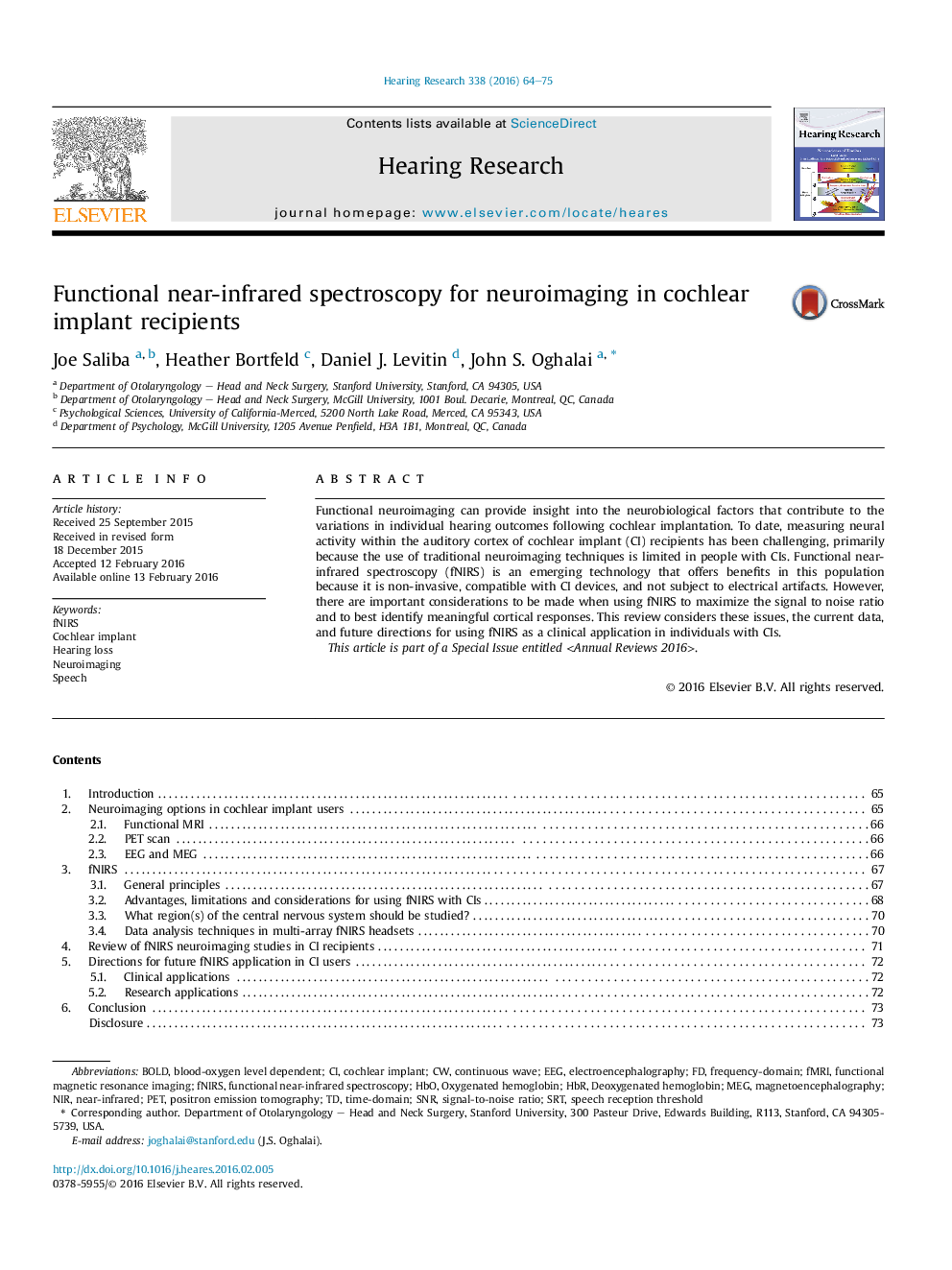| Article ID | Journal | Published Year | Pages | File Type |
|---|---|---|---|---|
| 4355064 | Hearing Research | 2016 | 12 Pages |
•fNIRS is a neuroimaging modality compatible with cochlear implant users.•Speech processing occurs within the lateral temporal lobe and superior temporal gyrus.•fNIRS can measure activity within these regions in cochlear implant users.•There are many promising applications for fNIRS in cochlear implant users.
Functional neuroimaging can provide insight into the neurobiological factors that contribute to the variations in individual hearing outcomes following cochlear implantation. To date, measuring neural activity within the auditory cortex of cochlear implant (CI) recipients has been challenging, primarily because the use of traditional neuroimaging techniques is limited in people with CIs. Functional near-infrared spectroscopy (fNIRS) is an emerging technology that offers benefits in this population because it is non-invasive, compatible with CI devices, and not subject to electrical artifacts. However, there are important considerations to be made when using fNIRS to maximize the signal to noise ratio and to best identify meaningful cortical responses. This review considers these issues, the current data, and future directions for using fNIRS as a clinical application in individuals with CIs.This article is part of a Special Issue entitled
